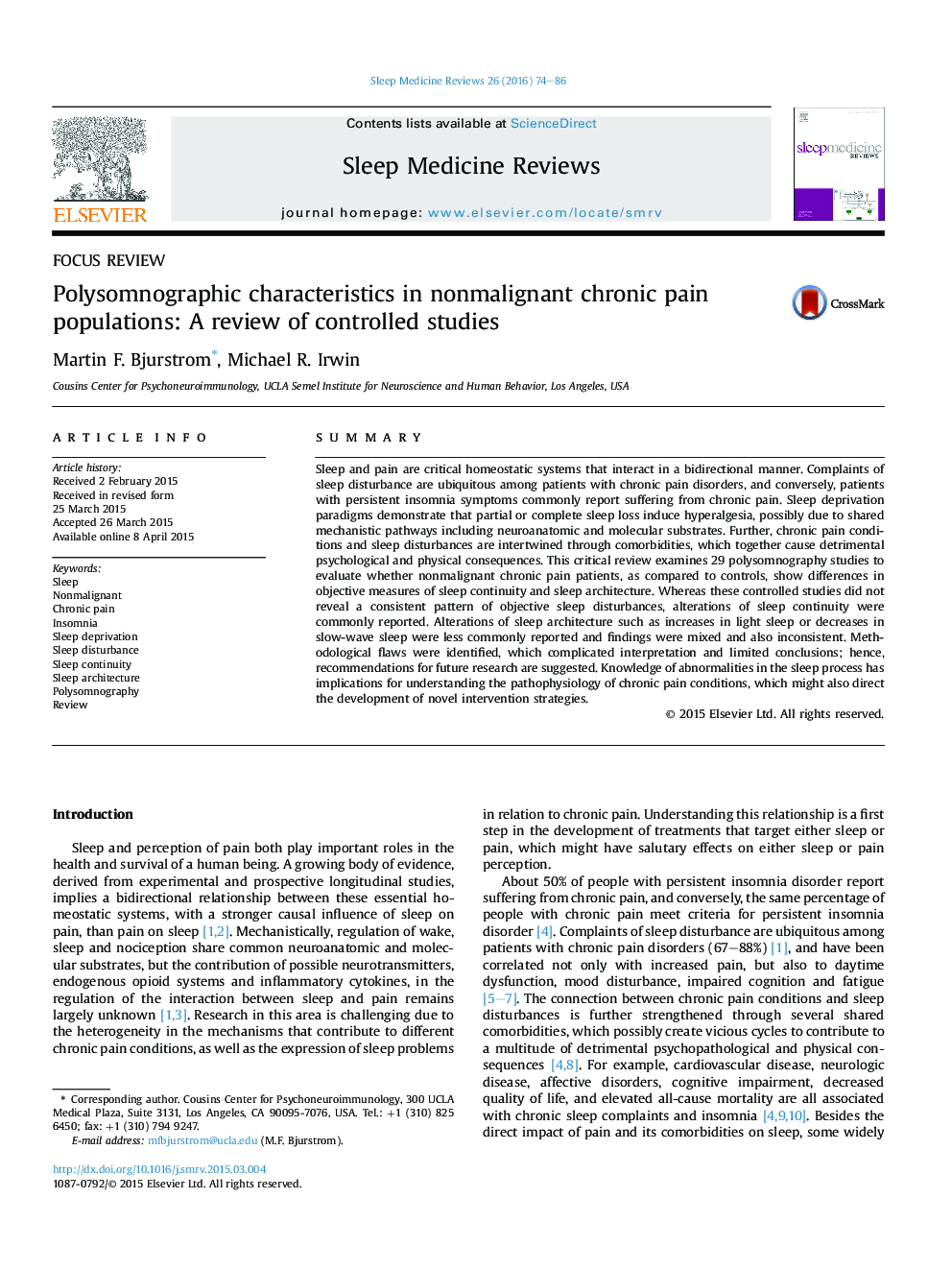| Article ID | Journal | Published Year | Pages | File Type |
|---|---|---|---|---|
| 3091326 | Sleep Medicine Reviews | 2016 | 13 Pages |
SummarySleep and pain are critical homeostatic systems that interact in a bidirectional manner. Complaints of sleep disturbance are ubiquitous among patients with chronic pain disorders, and conversely, patients with persistent insomnia symptoms commonly report suffering from chronic pain. Sleep deprivation paradigms demonstrate that partial or complete sleep loss induce hyperalgesia, possibly due to shared mechanistic pathways including neuroanatomic and molecular substrates. Further, chronic pain conditions and sleep disturbances are intertwined through comorbidities, which together cause detrimental psychological and physical consequences. This critical review examines 29 polysomnography studies to evaluate whether nonmalignant chronic pain patients, as compared to controls, show differences in objective measures of sleep continuity and sleep architecture. Whereas these controlled studies did not reveal a consistent pattern of objective sleep disturbances, alterations of sleep continuity were commonly reported. Alterations of sleep architecture such as increases in light sleep or decreases in slow-wave sleep were less commonly reported and findings were mixed and also inconsistent. Methodological flaws were identified, which complicated interpretation and limited conclusions; hence, recommendations for future research are suggested. Knowledge of abnormalities in the sleep process has implications for understanding the pathophysiology of chronic pain conditions, which might also direct the development of novel intervention strategies.
